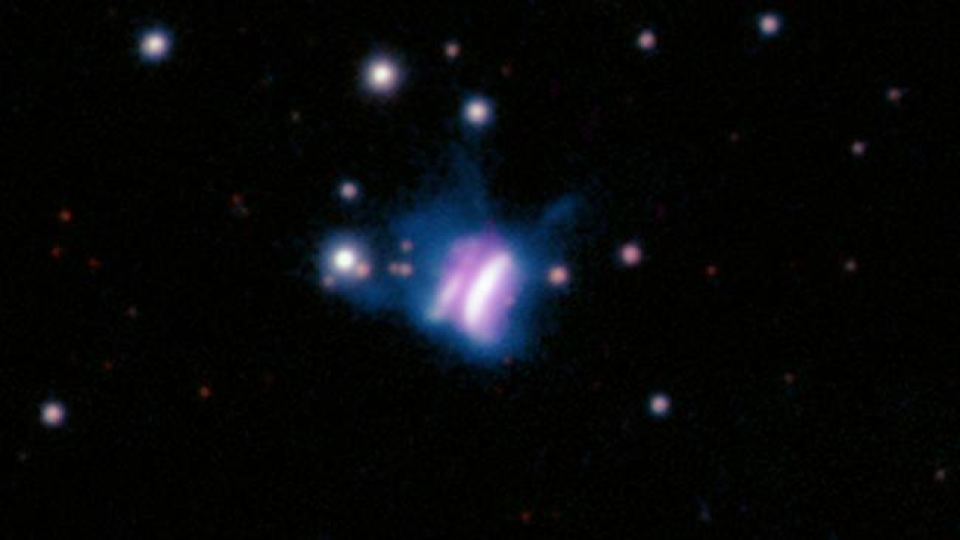
The sky is littered with small fuzzy blobs that are chock full of science waiting to be understood.
And one such fuzzy blob looks surreally like a butterfly.
Discovered in 2016, this object, cataloged as IRAS 23077+6707, is located about 1000 light years from Earth. Exactly what it’s fluttery light might be hiding couldn’t be discerned with the discovery data from Pan-STARRS, but new data from the Submillimeter Array in Hawaii has led to cool discoveries.
In a paper led by Ciprian Berghea in ApJL, researchers announce the discovery of a very young star at this system’s core; a star about 2 – 4 times the mass of our Sun. In a second paper, also in ApJL, researchers led by Kristina Monsch, identify a massive planet forming disk around the star – it is this disk that is creating the dark band through the bright nebulae. They estimate the disk capable of supporting numerous gas giants on orbits as much as 300 times further out than Jupiter is from our Sun.
It is unknown just how many lone systems like this one are out there, between the easily visible stars, waiting to be seen. This particular system stands out because we see a smear of light with a dark band across it. This is the classic shape of a young star still surrounded by bright gas, and an edge on planet forming disk blocking a band of the light. The image we use as our background here at EVSN is a similar kind of system.
To piece together the formation and diversity of extrasolar planets we’ll want to find and study more smudges like this one. Here is to hoping they are all this beautiful in their own kinds of ways.
